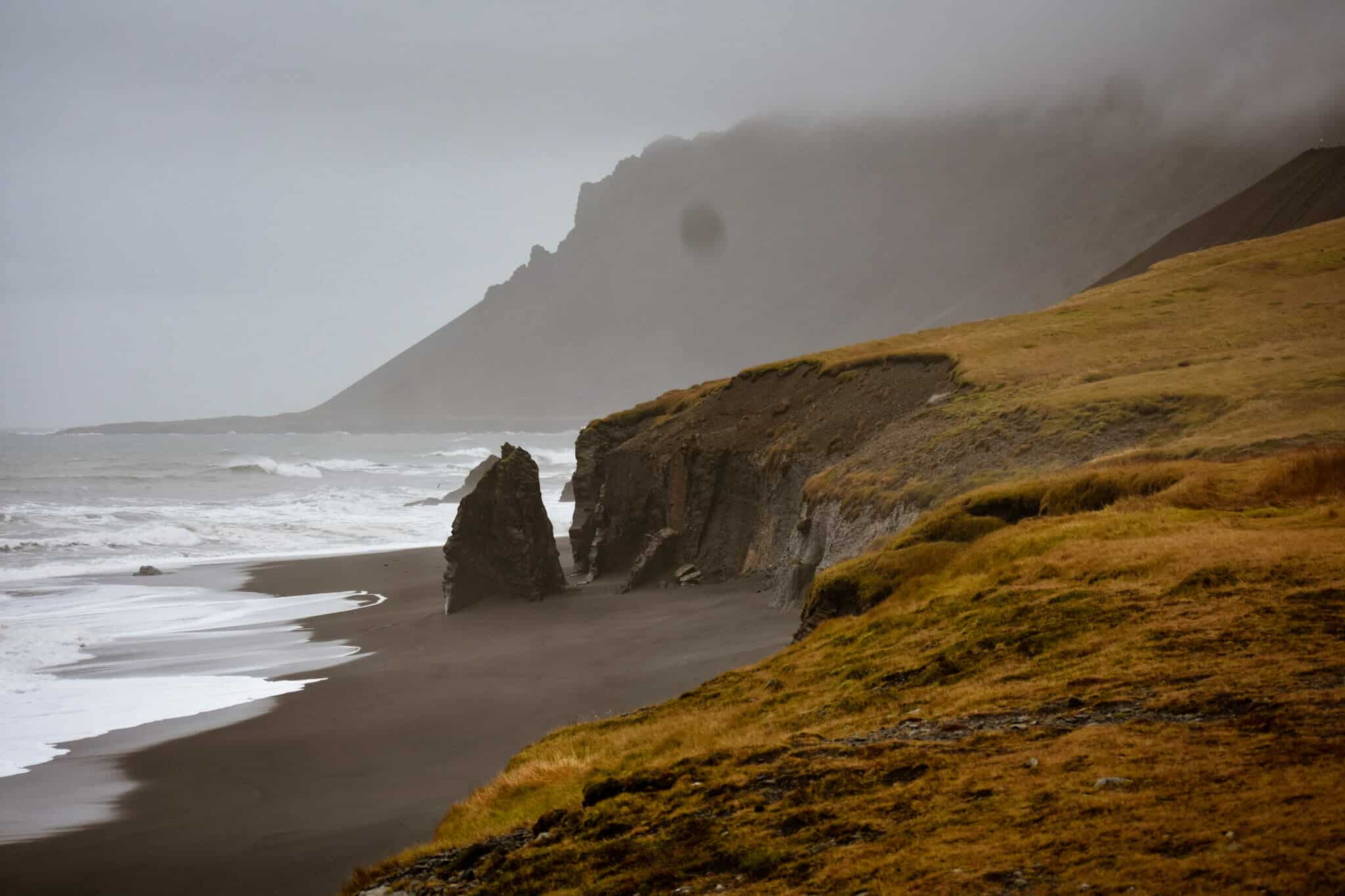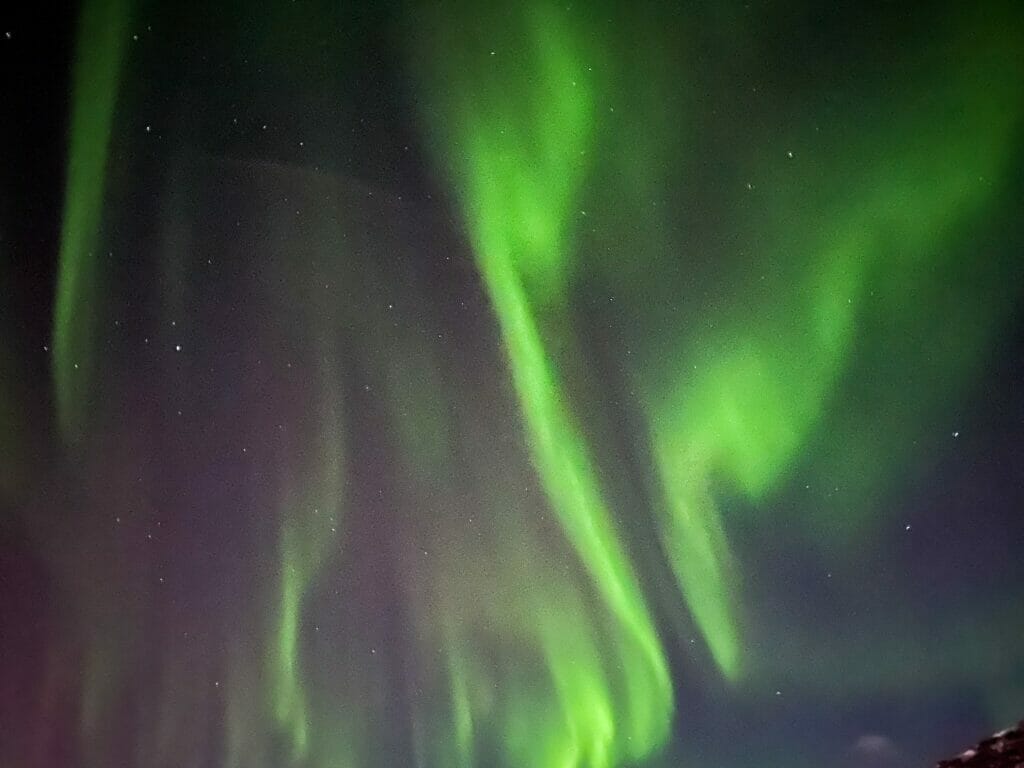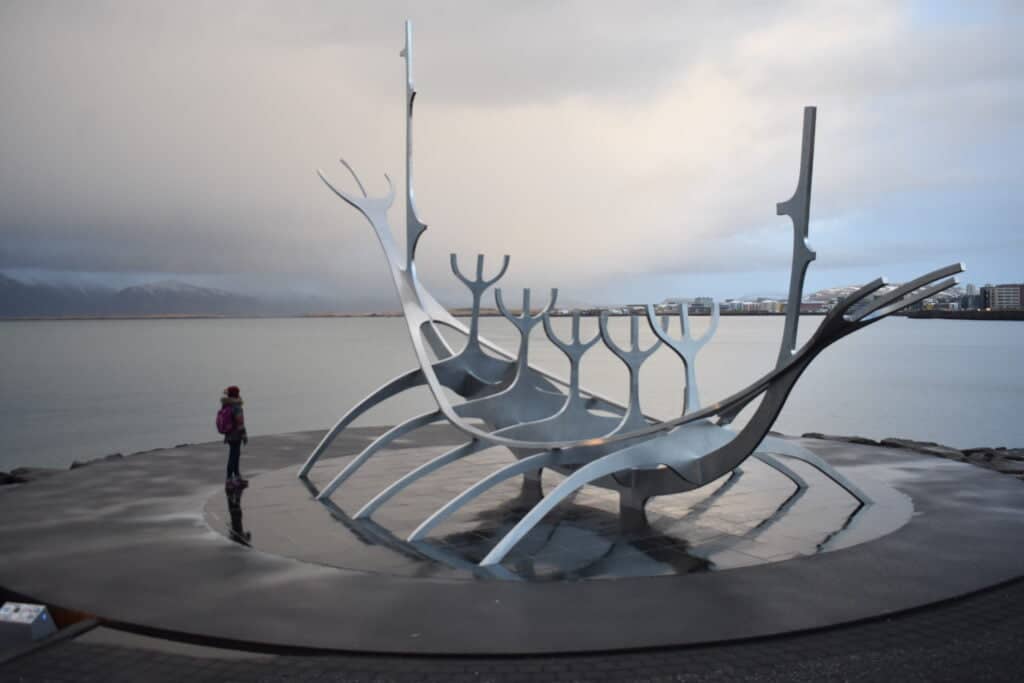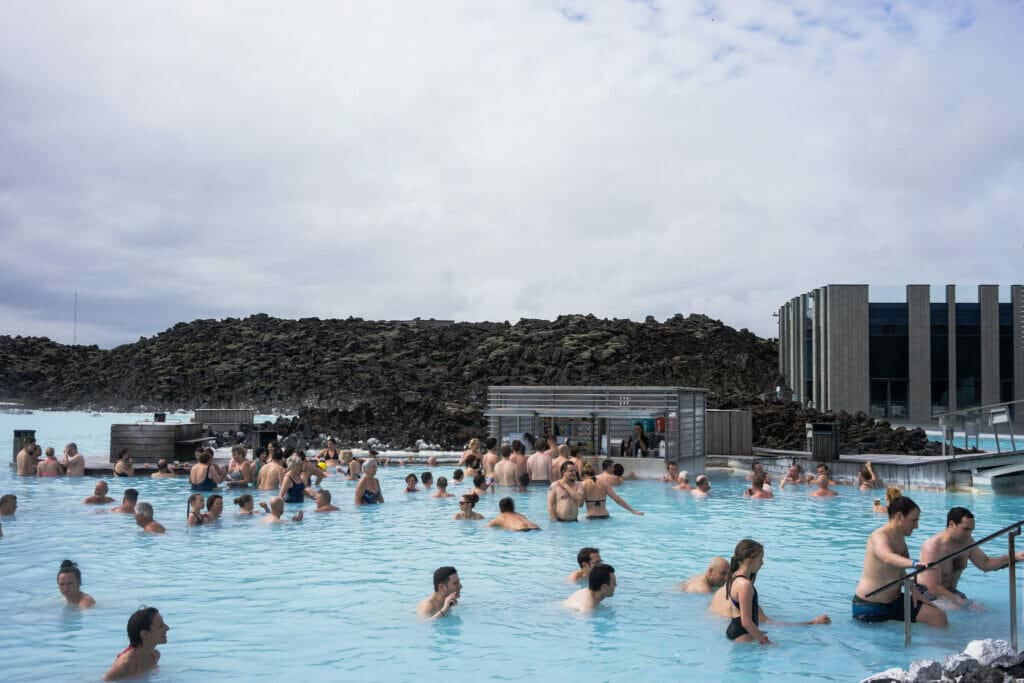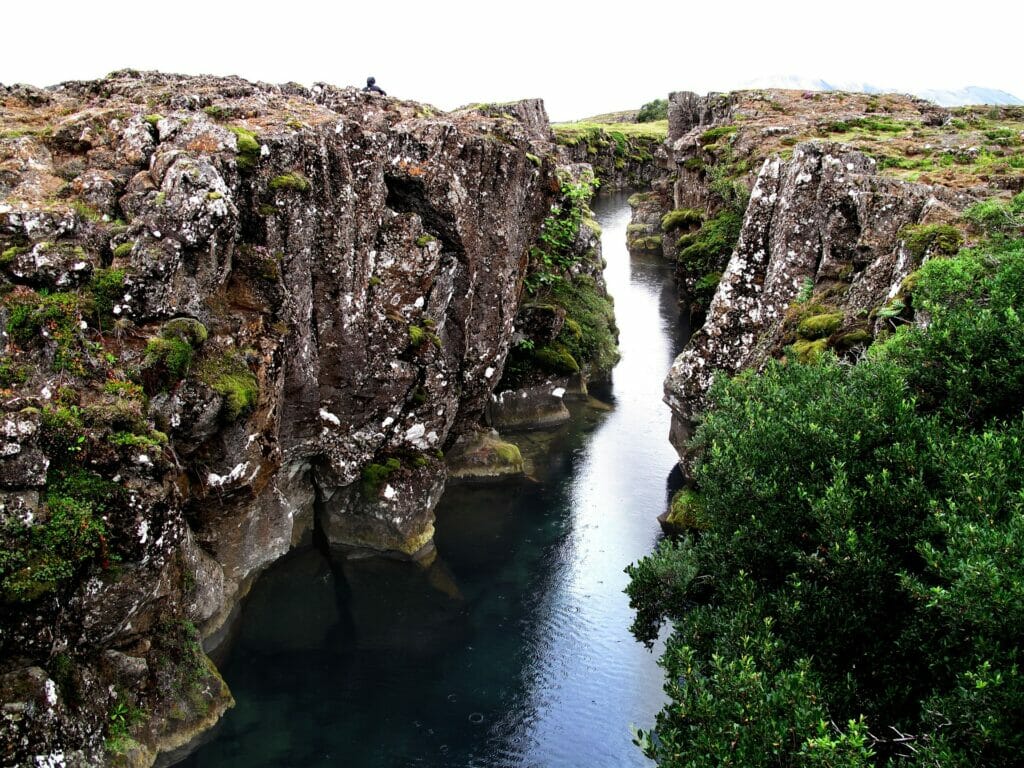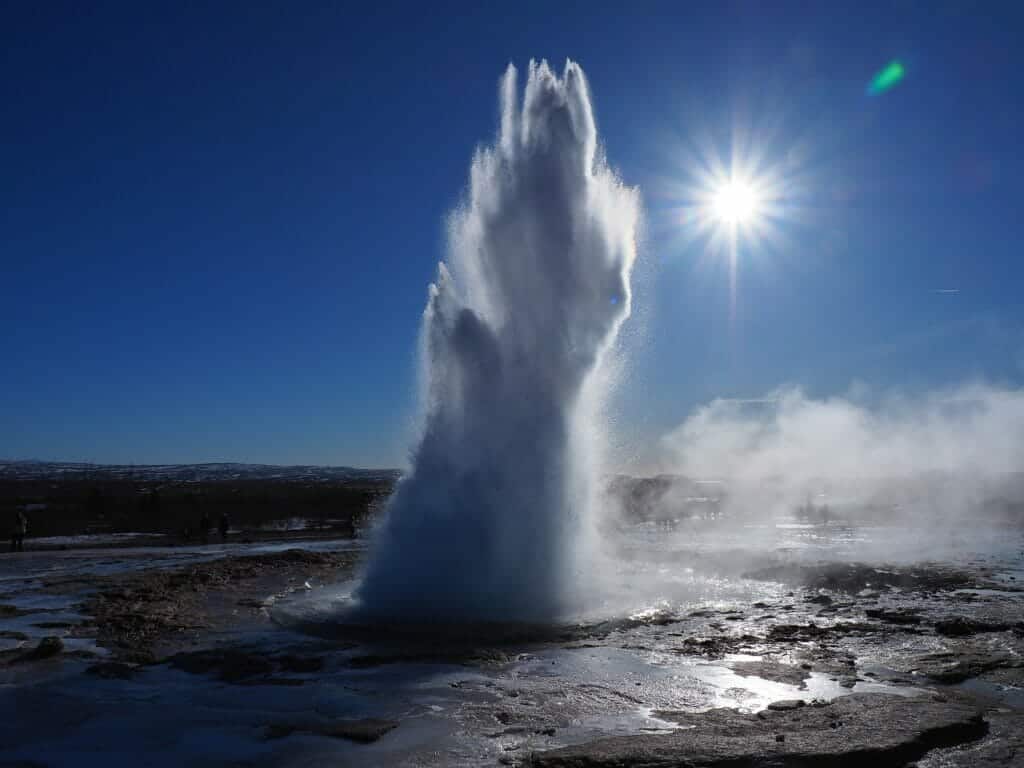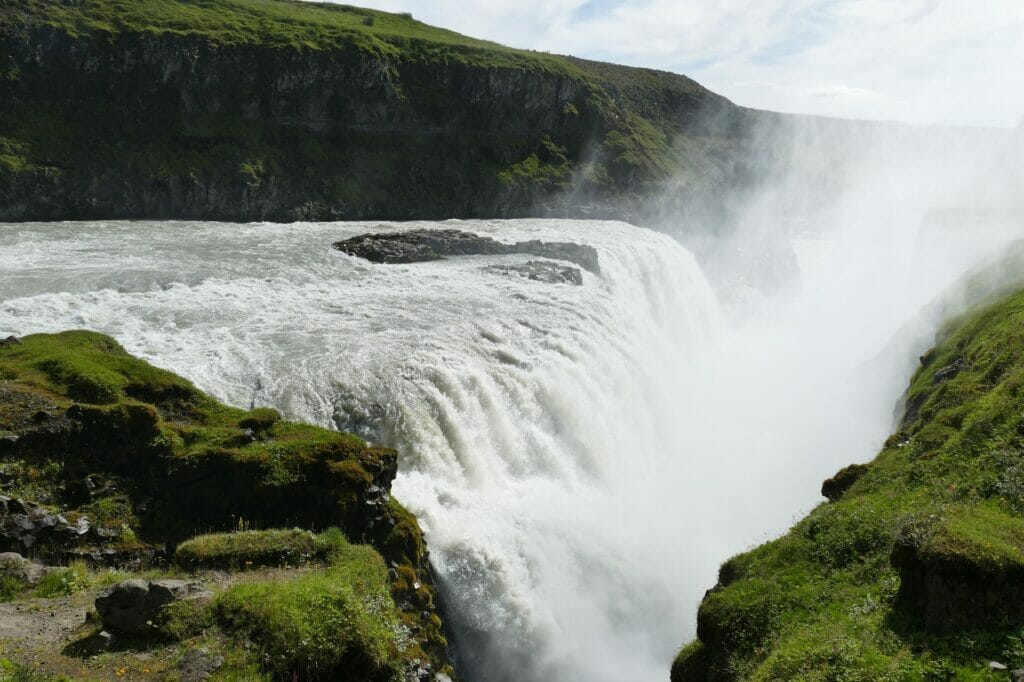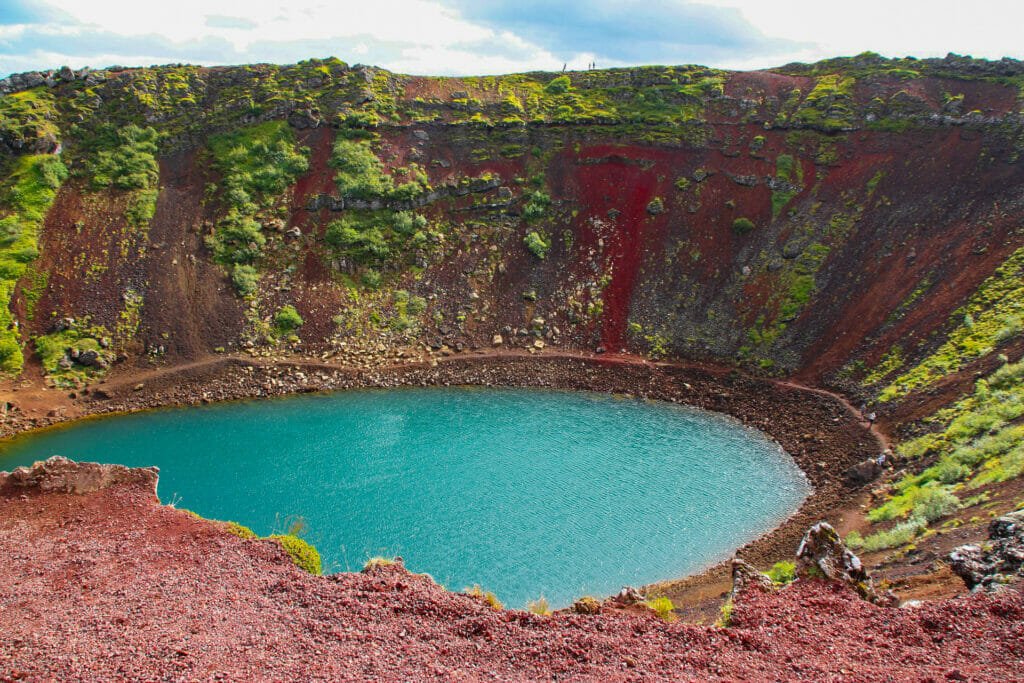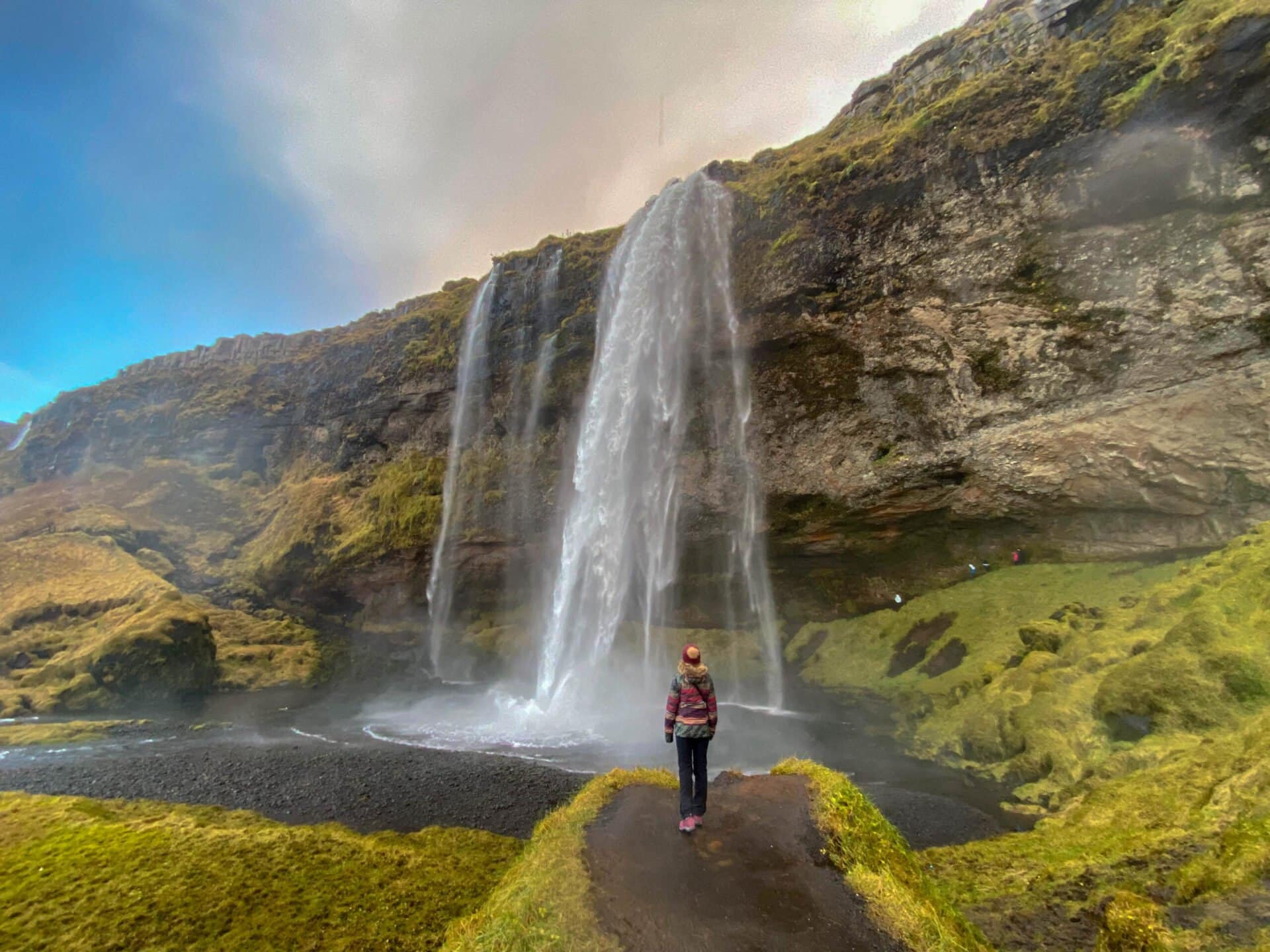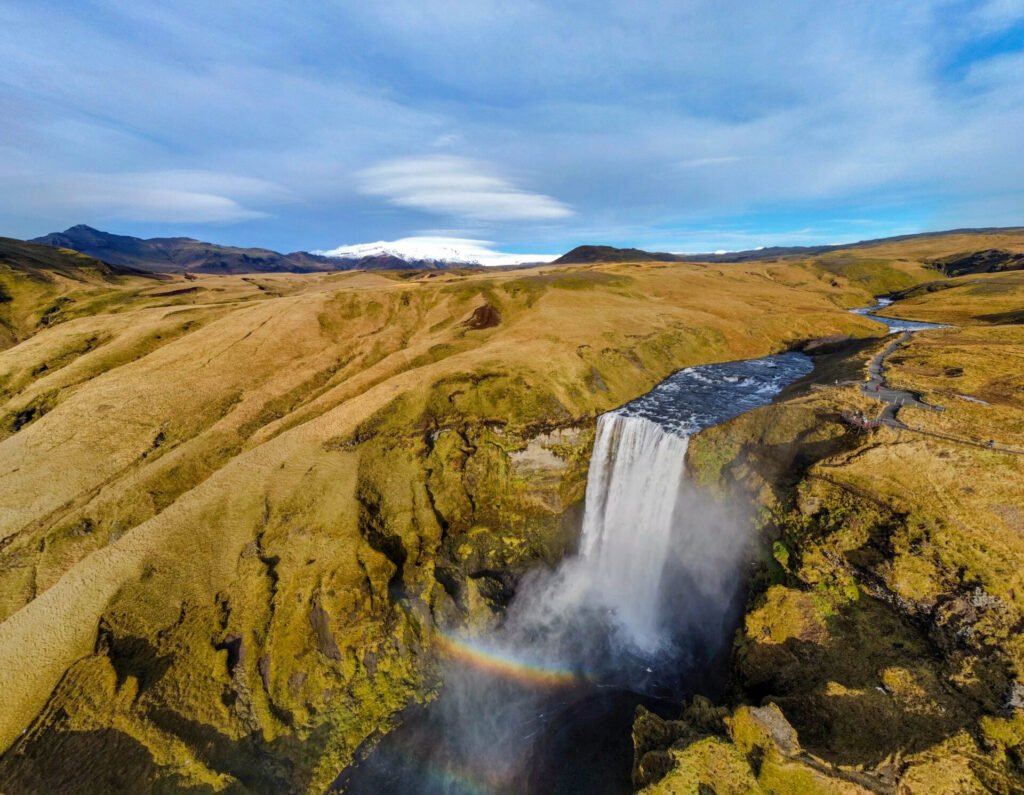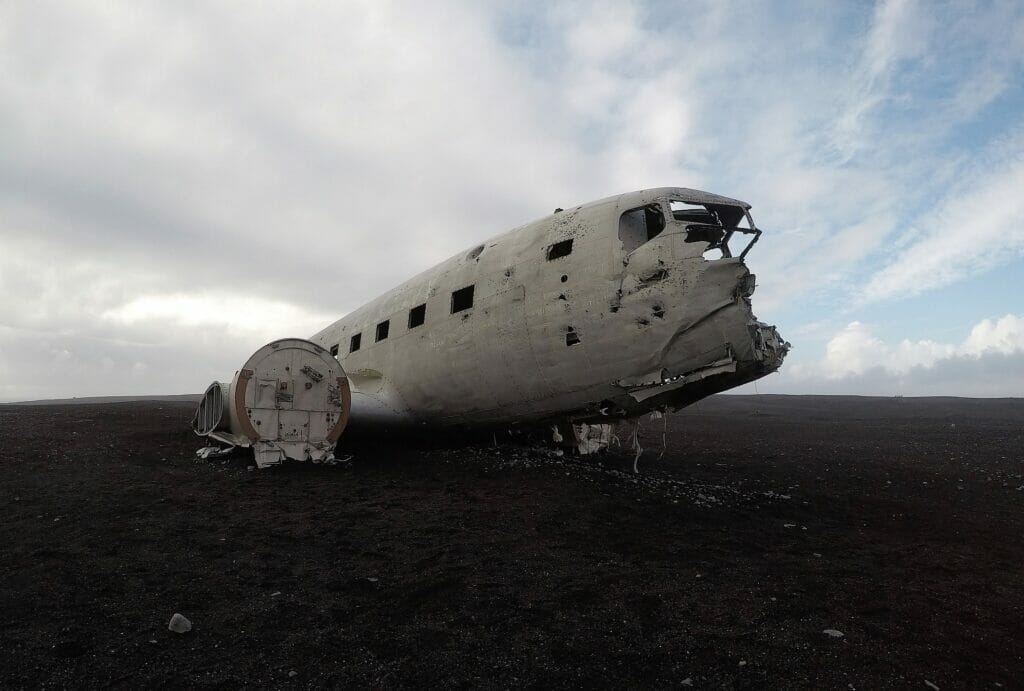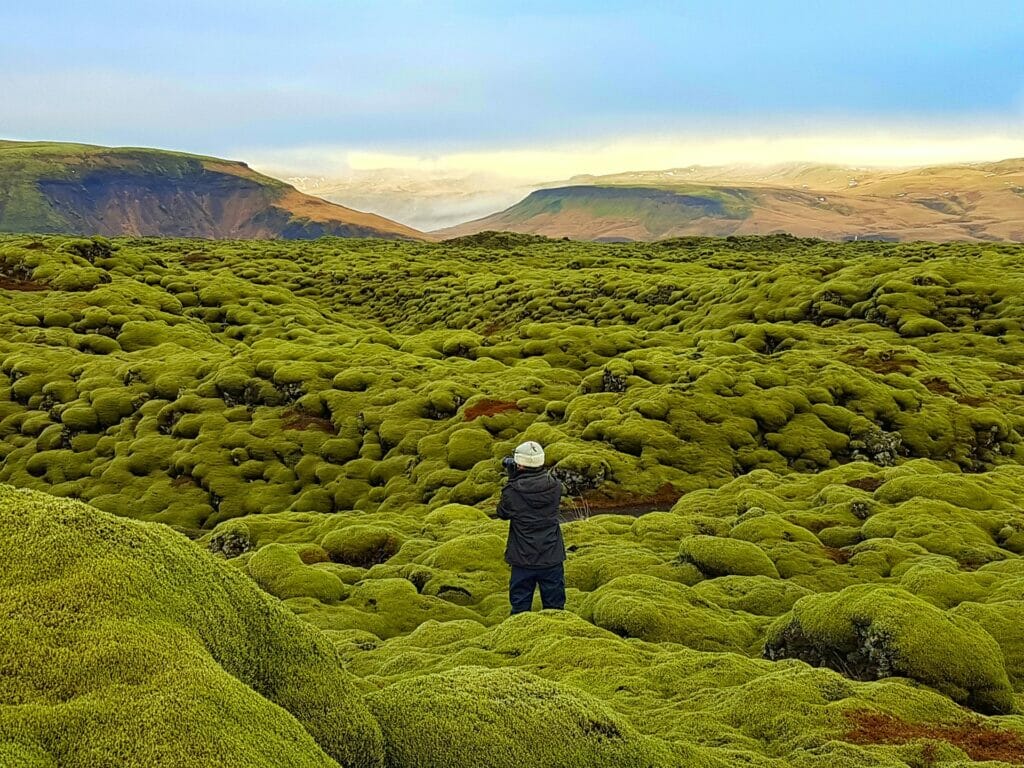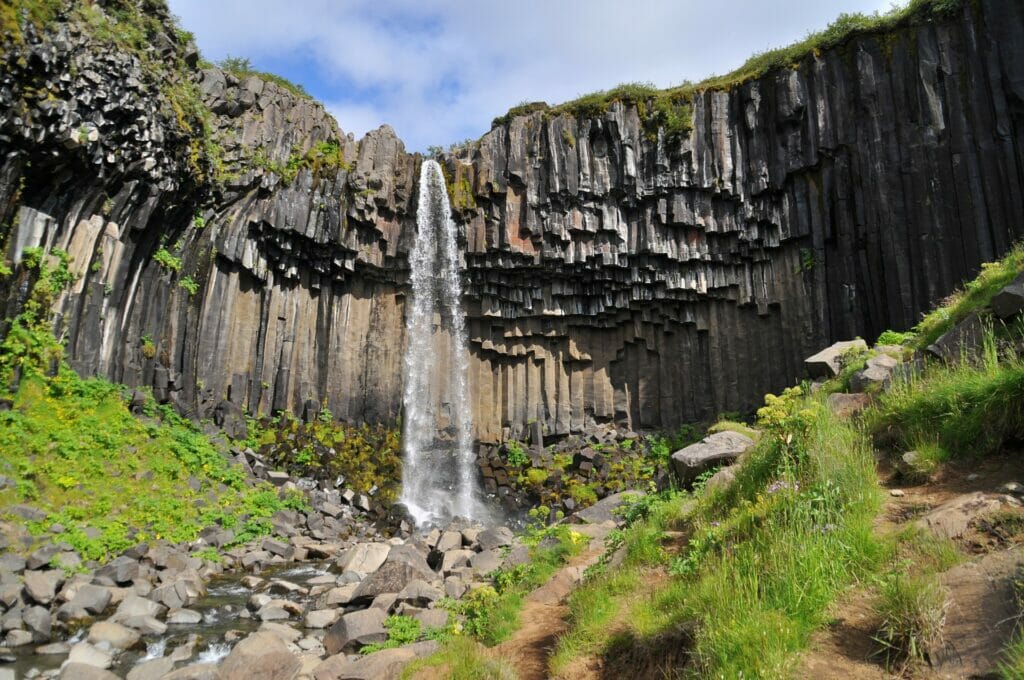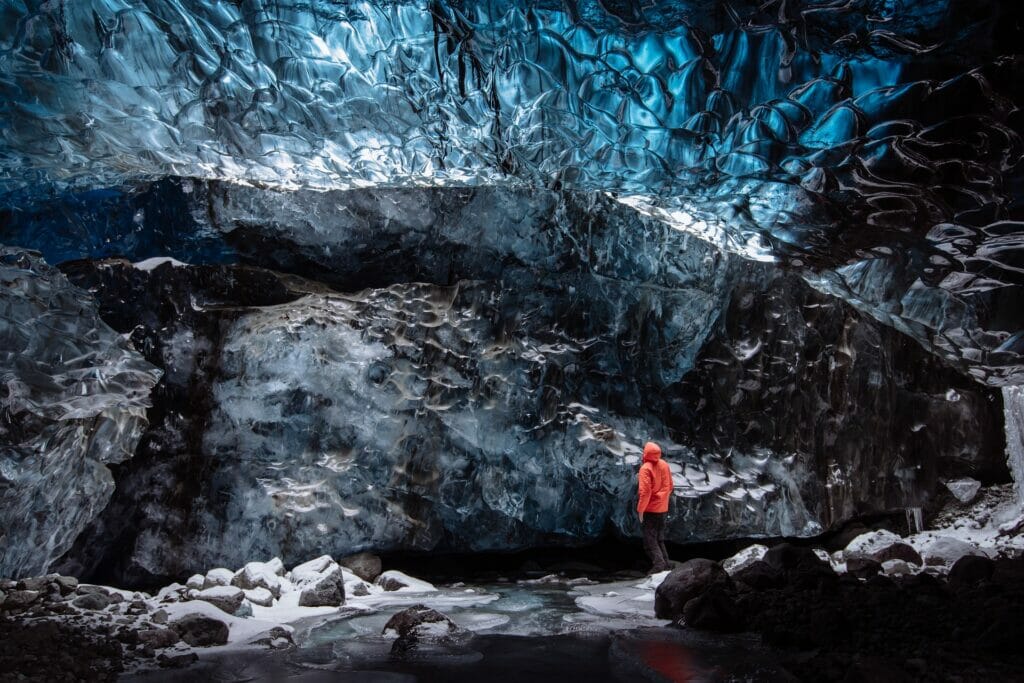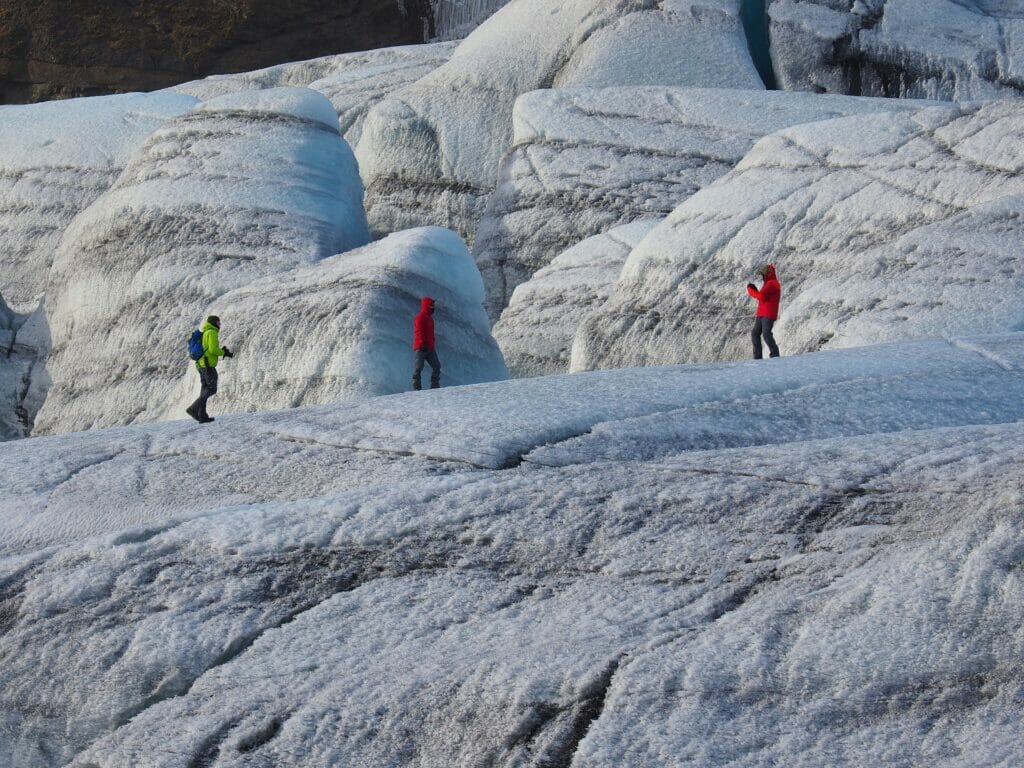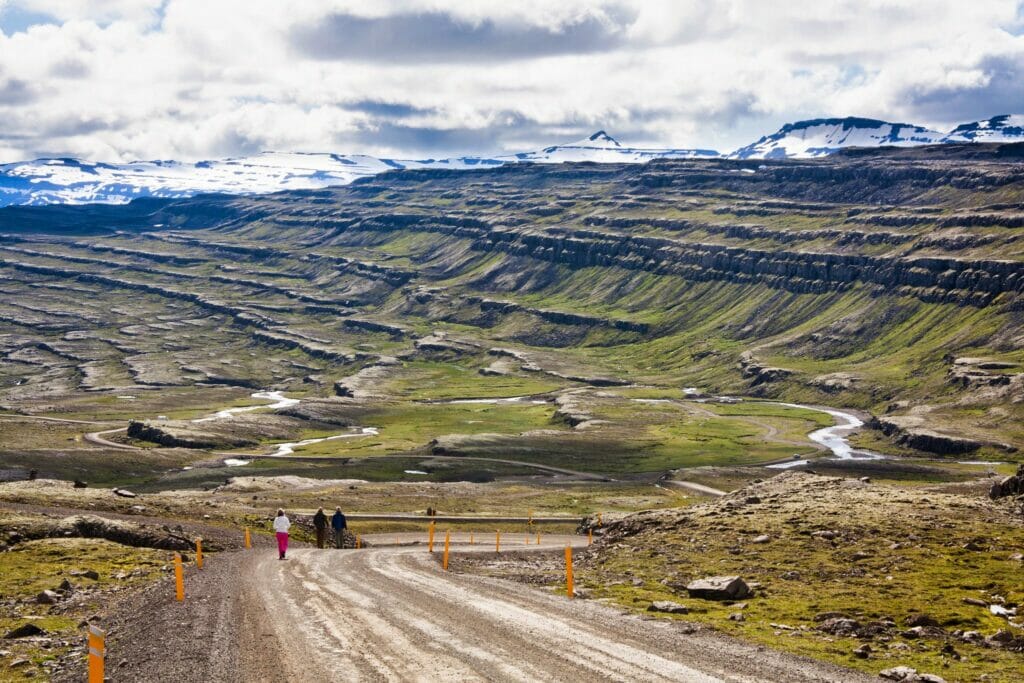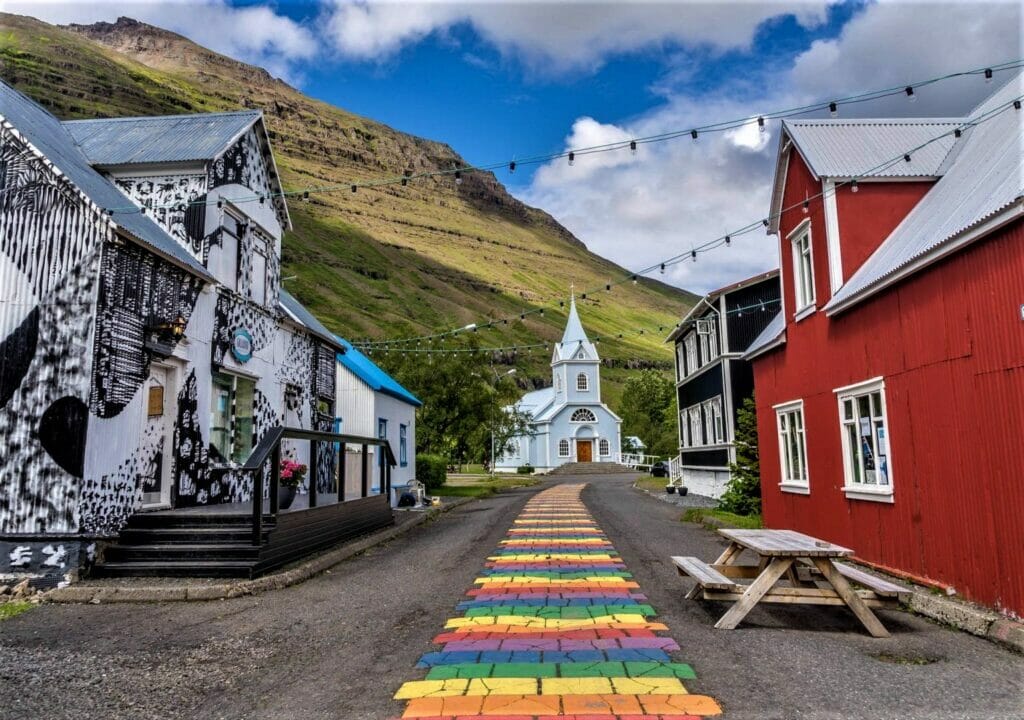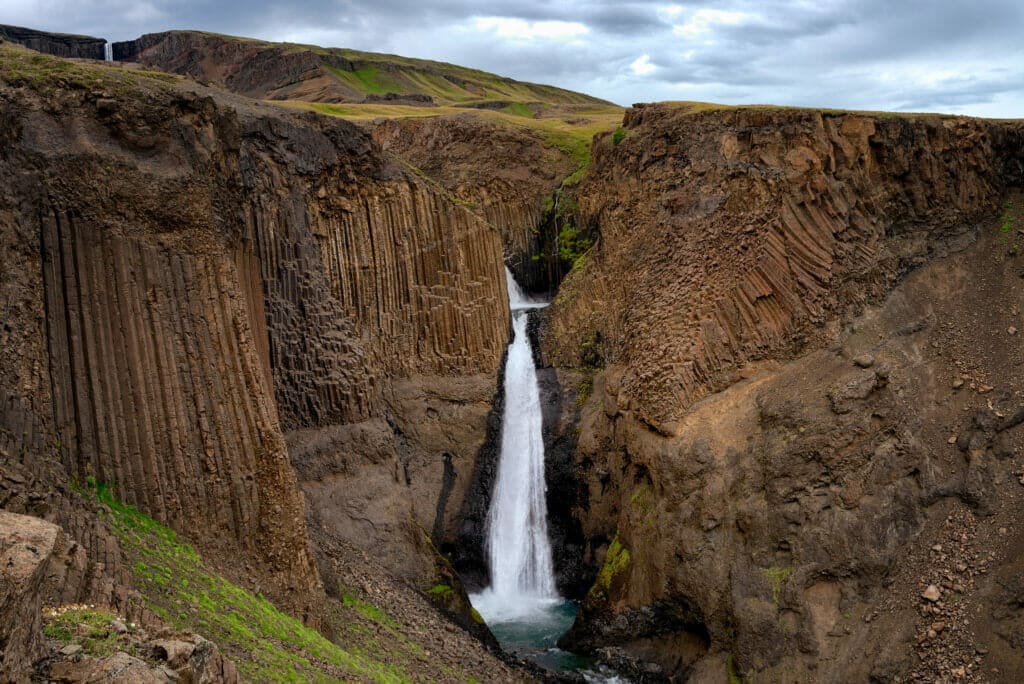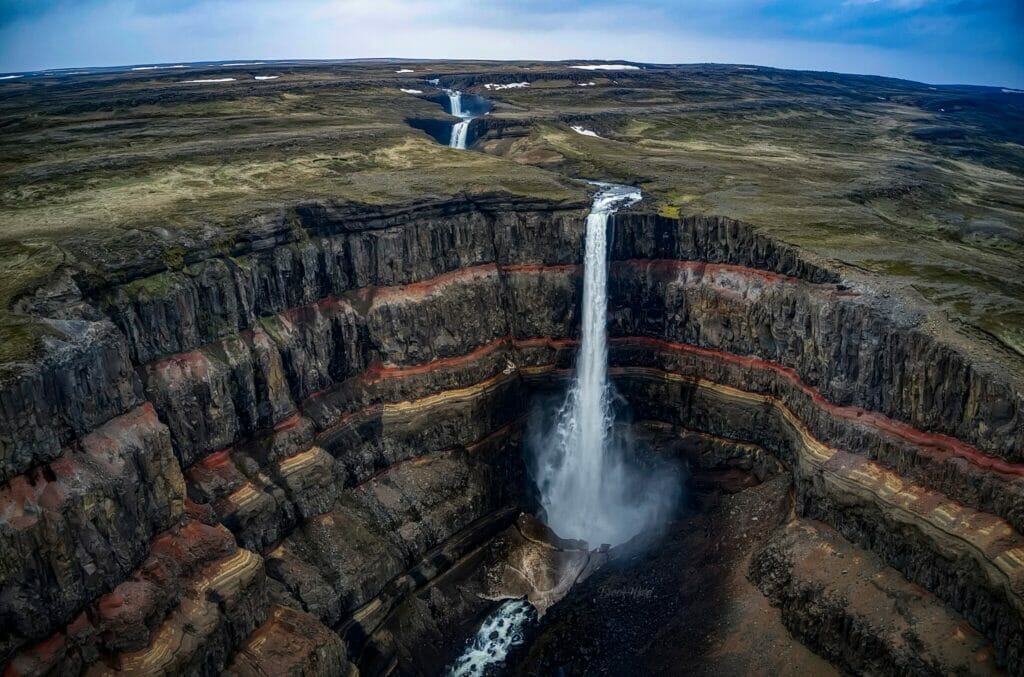The south coast of Iceland has the most visited attractions in the country. Here you will find beautiful Icelandic moss, massive waterfalls, volcanoes, glaciers and beaches with black sand. How to organize this road trip? Get inspired by our Iceland south coast roadtrip itinerary!
Car rental
For us personally, the best way to discover Iceland is by car. It is not very easy to bring your own car from Europe though. The only way is this Smyril line ferry from Denmark. The cruise lasts 3 days and the minimum price for 2 adults including a car up to 1.9m is €353. Food is not included in the price.
The most common rental companies are Avis, Hertz and Europcar. We found the best prices from Budget. If you are only going to a circuit around Iceland – the so-called Ring road or Golden Circle 4×4 is not necessary. You can get to most places without it. If you want to explore the Highlands it’s impossible without a 4×4. All the places on this list (except the Öxi mountain pass) can be reached with a classic car.
Parking
In Iceland, parking is often charged. Either in the city or at the most famous waterfalls. We offer you other alternatives in individual articles. We recommend you to download the Parka app. You can easily pay through it in many places. You can also check the current prices on the website parka.is. The fine for non-payment is high. Iceland is known for the fact that most people pay by card. This is also the case with parking. You should be able to pay by card and you don’t need to have cash. But it is always better to have a few Icelandic krona on hand just to be safe.
Our Iceland vlog
Best time to go
Winter conditions
In winter, you have the opportunity to watch the aurora borealis and, if you’re lucky, even stratospheric clouds. There are also fewer tourists. But the problem is very little light and bad weather. Snowstorms are common in Iceland. The Ring road is still fine, but a few sections may close unexpectedly. You can’t get to Highlands at all. Even a visit to the Westfjords is not recommended in winter. The roads can be impassable since mid-November. In the north of the island there is snow earlier than in the south. In winter, be sure have a strong car with high-quality tires. Many roads here are not maintained at all and have ice on them. In winter, Iceland looks black and white.
Summer conditions
In the summer you have a lot of sun in Iceland, sometimes almost all night. You can experience the beautiful “midnight sun” – around 21 hours of sun and a colorful sky. You’ll get a lot more done! Temperatures are more favorable and all roads are opened. You can visit the Highlands and also the Westfjords. The whole island is full of colors. From April to August you have the opportunity to watch puffins. And you can even camp in nature. In the summer, however, you have to count on a larger number of tourists.
1. Reykjavik
Reykjavik is the northernmost capital city in the world. Despite the inhospitable weather, this city is bursting with life. The residents are more than friendly. This little big city prides itself on creativity. You will find art at every turn. Unique architecture awaits you here – houses made of sheet metal. And don’t forget to see the famous majestic Hallgrimskirkja church.
2. Blue Lagoon
Beautiful spa with geothermal water. The water has a beautiful milky turquoise color due to the high content of silica. It also creates a layer of white mud on the bottom of the lake, with which visitors rub themselves. Water helps with various skin diseases. Due to high demand, it is recommended to book your ticket in advance. You can do so on the official website. The price of the cheapest package is €44. If you don’t have a car, various tourist offices operate from Reykjavik.
3. Fagradalsfjall volcano
The eruption of this volcano was preceded by thousands of earthquakes in the vicinity. The lava geyser reached a height of up to 400 m. The amazing thing is that this volcano is very easily accessible and people could stand only a few meters from the flowing lava. It has become a major tourist attraction. Currently, the volcano has subsided. But it is possible that the eruptions will continue. We went there to see it in November 2021. At that time, we only had views of the crater and dried lava fields.
4. Golden Circle
The Golden circle is a 300 km circuit that takes you to the three most famous natural attractions of Iceland – Thingvellir National Park, Geysir and Gullfoss waterfall. You can drive the Golden Circle together with one of the many 1-day tours from Reykjavik or with your own (rental) car.
Entry fee: free
Entry fee: free
V národnom parku Thingvellir sa nachádza jediné miesto na svete, kde sa dá prejsť medzi tektonickými doskami. A nie len to. V pukline Silfra sa medzi nimi môžete aj potápať. Tento zážitok vás vyjde okolo 300€ s transportom z/do Reykjaviku. Vyžaduje sa ale predošlá skúsenosť a PADI certifikát.
The Golden Circle also includes a geothermal area that boasts a number of thermal springs. The world geysir was actuall derived from the largest of them – The Geysir. However, this one explodes only exceptionally. But the nearby geyser Strokkur is very popular. It spews water up to a height of 20-40m every 10-15 minutes.
Gullfoss
Kerid
Entry fee: free
Entry fee: 400 ISK
One of Iceland’s most iconic waterfalls. The water comes from the Langjökull glacier. Gullfoss can be translated as “Golden waterfall”. It has two parts – 11m high cascades and a 21m high drop. Every second, up to 140 cubic meters (in summer) flow here. Its overwhelming power will get you. If you get too close to it, you won’t stay dry.
Although it is not officially part of the Golden Circle, it is a very popular stop. Kerid is a 3000 year old volcanic crater lake. Many people are attracted by its unique turquoise color and the red color of the slope. The crater is 55m deep. This place is also great for viewing the northern lights.
5. Seljalandsfoss and Gljúfrabúi
Seljalandsfoss waterfall is unique mainly because of the footpath leading beyond the waterfall. It’s just surreal standing behind that mass of water. Don’t count on getting out of here dry. Seljaladsfoss looks beautiful from every angle! And just a short distance from it is another gem – Gljúfrabui. It is surrounded on all sides by high cliffs.
6. Skógafoss and Kvernufoss
Skógafoss is one of the largest waterfalls in Iceland. Its width is 25 meters and height 60 meters. You will almost always see a rainbow at the waterfall on a sunny day. And don’t miss the view over the waterfall. You can find it at the end of the stairway leading to the top.
Kvernufoss is considerably lesser known than Skogafoss. And it is right next to it. You can even walk beyond the waterfall.
7. Airplane wreck
A crashed plane on a black beach looks very mysterious, don’t you think? It became a well-known photo attraction. The road does not lead to the wreck. You have to park your car by the road (map) and from there you have to walk for about 30-40 minutes. Never underestimate the weather in Iceland. Dress properly and in quality clothes. It was during this walk that two tourists died here. They miscalculated the weather and died of hypothermia.
8. Reynisfjara (black sand beach)
The most famous beach with black sand. Here you will also find breathtaking cliffs in the ocean and incredible geometric basalt columns. It is here that you have the chance to observe the majestic power of the ocean. It manifests itself in high waves. Reynisfjara is one of the most dangerous attractions in Iceland. Why is that so? Read this article to find out (coming soon).
9. Skaftáreldahraun
Unfortunately, we were passing this place in the dark. It looks like something from another planet. The great thing is that you can find it right off road 1 (map). These are dried lava fields that were created during the eruption of a 27 km long volcanic fissure in 1783. It is considered one of the largest eruptions in the world. Up to a quarter of the population and 75% of livestock perished during this period. Today you can find long stretches covered with beautiful moss. During your visit, remember not to stemp on the moss. You will destroy it and it takes hundreds of years to rebuild.
10. Svartifoss
Svartifoss, or Black waterfall in translation, is one of the most interesting in southeast Iceland. The geometrically regular basalt columns in its vicinity are the reason for this. The waterfall is 20 m high. This whole trip will take you about 1.5 hours. You have to walk 1.5 km uphill to get to it. But you will see other waterfalls on the way, too. Entrance is free, but parking costs 750 ISK per car (current price list). You can park HERE
11. Glacial ice caves
Ice caves are a very popular attraction, especially in winter. Unfortunately, you can usually visit them only with a tourist guide and a crowd of other tourists. This is for your own safety. There are plenty of such caves to choose from in Iceland. Either natural or artificially constructed. Among the most famous is the Crystal Ice Cave. A visit to this cave costs around €150 per person.
12. Glacial hike through Vatnajökull glacier
Vatnajökull is the largest glacier in Europe. It makes up 8% of the whole of Iceland. Walking on top of it is an amazing experience. This is also not recommended to be done on your own. A glacier can be unstable and dangerous if you are not familiar with it. Therefore, it is better to be guided by experts. They have amazing knowledge not only about glaciers but also about the geology of Iceland. Such an experience will cost you from €80 per person. It depends on which tour and with whom you choose to go.
13. Glacial lagoon Jökulsárlón
In this lagoon you will find pieces from the Vatnajökull glacier. Its depth is an incredible 248m. It is the deepest lake in Iceland. Here you can observe ice that is several thousand years old. If you are lucky, you will also see wild seals. A boat ride on the lagoon is also an amazing experience. You can find Jökulsárlón right next to road number 1.
14. Diamond beach
Right next to the Jökulsárlón glacier lagoon you will find the famous Diamond beach. It is a beautiful beach with black sand. There are pieces of ice on it. The water washed themhere from the adjacent lagoon. The contrasts on the beach are unreal. This is what attracts many photographers. You can also spot some seals here.
15. Mountain pass Öxi
The Öxi mountain pass can be found on road number 939. It is a shortcut between the towns of Djúpivogur and Egilsstadir. This road is also passable by classic cars, but it is recommended to have a more proper 4×4. It’s an old damaged road full of holes, twists and turns and it’s steep. The weather here can change quickly. This road is closed in winter.
16. Vök geothermal SPA
Just 5 minutes away from Egilsstadir you will find this beautiful Vök geothermal spa. At the same time, they are the only “floating” pools in Iceland. The pools float directly on Lake Urriðavatn. The water here is so clean that it is certified as drinking water. They are open every day and the entrance fee is 5500ISK or 37€. You can find current information on the website.
17. Church in Seyðisfjörður
One of the most popular photo spots in Iceland. Many people are attracted not so much by the church itself, but rather by the colorful path right in front of it. This church once stood on a hill in Vestdalseyr. However, the wind blew it away and destroyed it. And so it was rebuilt and moved to the heart of Seyðisfjörður.
In the summer, you can also take a look inside the church. More info HERE.
18. Hengifoss
Iceland is full of waterfalls. I was personally interested in this one precisely because of its surroundings. Hengifoss is surrounded by deposits of red clay alternating with black basalt. With its height of 128.5m, it is the second highest waterfall in Iceland. The hike is about 2.5 km long and will take about 1 hour. On the way to Hengifoss, you will also pass by the beautiful Litlanesfoss. The waterfall is 30m high but is surrounded by beautiful basalt columns. Judge for yourself. You can park HERE.

